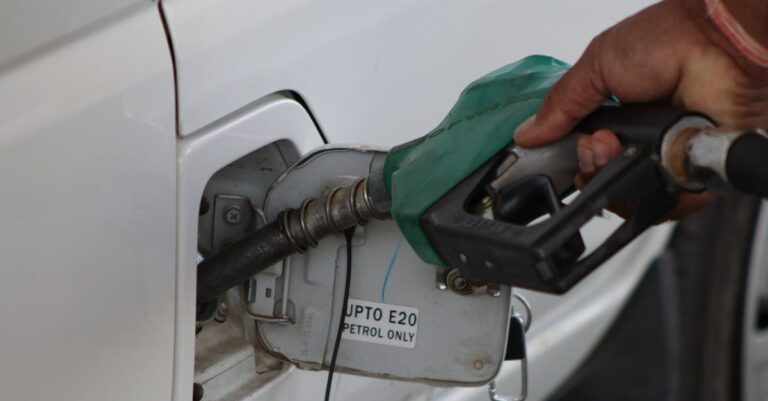Table of Contents
- Break In A New Car: Best Practices for Longevity and Performance
- Why Bother Breaking In a New Car Anyway? Isn’t That Old News?
- Your First 1,000 Miles: The Critical Break In Period
- Beyond the Engine: Other Components Need Love Too
- Towing and Heavy Loads: Hold Off for a Bit
- The First Oil Change: Earlier Than You Think?
- Common Myths About Breaking In a New Car Debunked
- Conclusion: Setting Your New Ride Up for Success
- Frequently Asked Questions (FAQs)
- FAQ 1: Do electric cars (EVs) need a break in period?
- FAQ 2: What happens if I don’t follow the break in procedure?
- FAQ 3: How long does the entire break in process really take?
- FAQ 4: Can I use cruise control during the break in period?
- FAQ 5: Is there a specific break in procedure for performance cars?
Break In A New Car: Best Practices for Longevity and Performance
So, you did it! You pulled the trigger on a brand new car. The smell, the shine, the sheer excitement – it’s intoxicating, isn’t it? You probably want to floor it straight out of the dealership lot, hear that engine roar (or hum, if you’ve gone electric!), and feel the pure, unadulterated power. But hold your horses, cowboy (or cowgirl)! Just like a new pair of stiff leather boots needs wearing in, your new car needs a gentle introduction to the world. This initial “break in” period is crucial for ensuring its long term health, performance, and even fuel economy. Let’s dive into the best practices for breaking in your new ride.
Why Bother Breaking In a New Car Anyway? Isn’t That Old News?
You might hear some folks say, “Oh, modern cars don’t need breaking in. Manufacturing tolerances are so much better now!” And while it’s true that manufacturing has come a long way, dismissing the break in period entirely is a bit like saying you don’t need to warm up before a marathon just because you’re wearing high tech running shoes. The fundamental processes happening inside a new engine and other components haven’t magically disappeared.
Modern Engines vs. Old School: What’s Changed?
Back in the day, breaking in a car was a much more involved process. Tolerances weren’t as tight, materials weren’t as advanced, and things like piston rings really needed time and specific procedures to seat properly against the cylinder walls. If you messed it up, you could end up with an engine that burned oil or never quite performed right. Today, thanks to computer controlled machining, better materials, and more sophisticated designs, the components start much closer to their final, ideal fit. Think of it like getting a suit tailored – modern engines come off the line needing less ‘alteration’ during the break in period compared to their vintage counterparts. However, they still benefit immensely from a period of careful operation to allow all the moving parts to mate perfectly.
The Real Benefits: Why It Still Matters
Even with modern precision, microscopic imperfections exist on freshly machined surfaces like cylinder walls, piston rings, bearings, and gears. The break in period allows these surfaces to gently polish each other down, creating a smoother, more efficient, and more durable interface. What does this mean for you?
- Better Engine Sealing: Properly seated piston rings mean less combustion gas blowing past them (blow by) and less oil getting into the combustion chamber. This translates to better compression (more power!), lower emissions, and reduced oil consumption over the car’s life.
- Increased Longevity: Allowing components to mate gently reduces initial wear and tear. This helps parts like bearings, gears, and engine internals last much longer. Think of it as preventing premature aging for your car’s mechanical heart.
- Optimized Performance & Fuel Economy: A well broken in engine operates with less internal friction. Less friction means more power gets to the wheels and less fuel is wasted overcoming resistance.
- Smoother Operation: Transmissions, differentials, and even brakes benefit from a break in period, leading to smoother shifts and more effective stopping down the road.
Essentially, taking it easy for the first few hundred or thousand miles is an investment in your car’s future performance and reliability. It’s about setting the stage for a long and happy relationship with your new vehicle.
Your First 1,000 Miles: The Critical Break In Period
Most manufacturers will outline specific break in procedures in the owner’s manual (yes, you should actually read it!). While the exact recommendations can vary slightly depending on the make and model, the general principles are quite consistent, especially for the first 500 to 1,000 miles. This is the most critical phase.
Vary Your Engine Speed: The Golden Rule
This is probably the single most important piece of advice. You want the engine to experience a wide range of RPMs, but without stressing it.
Why Constant RPMs are a No Go
Imagine trying to break in those new boots by just standing still in them. It wouldn’t work very well, right? Similarly, driving at a constant speed, especially on a long highway trip using cruise control, keeps the engine spinning at the same RPM for extended periods. This doesn’t allow the piston rings to seat properly across their entire range of movement against the cylinder walls. Varying the engine load and speed helps the rings expand and contract, applying pressure more evenly and creating a better seal over time.
Practical Tips for Varying Speed (City vs. Highway)
So, how do you actually *do* this? It’s easier than it sounds.
- Mix It Up: The ideal scenario involves a mix of city and highway driving. City driving naturally involves lots of starting, stopping, accelerating, and decelerating, which is great for varying engine speed.
- Highway Strategy: If you *must* do a lot of highway driving initially, avoid using cruise control. Manually vary your speed every few minutes – maybe cruise at 60 mph for a bit, then 65 mph, then back down to 55 mph. If your transmission allows, occasionally shift to a lower gear (without over revving) for brief periods to change the RPMs, then shift back up.
- Listen to Your Engine: Pay attention to the engine sounds and how the car feels. You’re not aiming for drastic, jerky changes, just smooth variations in speed and load.
Avoid Hard Acceleration and Braking
Think “gentle” during the break in period. Your goal is to let all the new parts get acquainted without putting them under extreme stress.
Letting Components Settle In
Stomping on the gas pedal puts immense pressure on pistons, connecting rods, bearings, and the entire drivetrain. While your new engine is built to handle this eventually, doing it right out of the box can cause uneven wear or stress before surfaces have properly mated. Gradual acceleration allows parts to seat correctly under moderate load. Imagine gently sanding a piece of wood versus hacking at it with coarse grit paper – you want the smooth finish!
Brake Pad Bedding: A Gentle Approach
Your brakes also need a break in period, often called “bedding in.” New brake pads and rotors need to establish full contact and transfer a thin, even layer of pad material onto the rotor surface. Slamming on the brakes repeatedly when they’re brand new can cause uneven pad deposits, leading to vibration (brake judder) later on. Gentle, progressive braking during the first few hundred miles allows the pads and rotors to mate properly, ensuring smooth, quiet, and effective stopping power for the long haul. Some performance brake manufacturers have specific, more aggressive bedding procedures, but for most standard cars, just avoiding panic stops initially is sufficient.
Keep Revs Moderate: Redline is Off Limits (For Now)
While varying RPMs is crucial, you should avoid pushing the engine to its maximum speed (redline) during the break in period. Check your owner’s manual, but a general guideline is to keep the revs below about two thirds or three quarters of the way to redline for the first 500 to 1,000 miles. For example, if your redline is 6,000 RPM, try to keep it mostly below 4,000 or 4,500 RPM. High RPMs generate significant heat and pressure, which can be detrimental before components have fully settled. There will be plenty of time to explore the upper reaches of the tachometer later!
Beyond the Engine: Other Components Need Love Too
While the engine often gets the most attention, don’t forget about the other parts of your new car that benefit from a gentle start.
Tires: Scrubbing Them In
Brand new tires have a mold release lubricant on their surface from the manufacturing process. This coating can make them feel a bit slippery for the first 100 miles or so. It takes some driving for this lubricant to wear off and for the tire tread to “scuff up,” providing optimal grip. So, take corners a little easier and allow slightly longer braking distances initially until the tires are properly scrubbed in. Avoid aggressive cornering or emergency maneuvers if possible during this initial phase.
Transmission Considerations (Automatic vs. Manual)
Whether you have an automatic or a manual transmission, the gears and internal components also benefit from a break in period. Smooth acceleration and deceleration help the transmission components mesh properly.
- Automatics: Avoid using manual shift modes aggressively or forcing hard downshifts right away. Let the transmission shift smoothly on its own.
- Manuals: Practice smooth clutch engagement and gear changes. Don’t force shifts or ride the clutch. Varying the gears you use (as part of varying your speed) also helps break in the different gear sets.
Suspension and Other Bits
Even components like shock absorbers, springs, and bushings settle in over the first few hundred miles. While you don’t need to do anything specific, avoiding extremely rough roads or hitting potholes hard during the initial period is generally a good idea to let everything settle without undue shock.
Towing and Heavy Loads: Hold Off for a Bit
Your owner’s manual will almost certainly advise against towing a trailer or carrying very heavy loads during the initial break in period (often the first 500 or 1,000 miles). Why? Towing puts a significant, sustained strain on the engine, transmission, differential, and even the brakes. Asking these components to handle maximum load before they’ve had a chance to properly seat and wear in can lead to premature wear or damage. Give your vehicle time to get conditioned before asking it to do the heavy lifting.
The First Oil Change: Earlier Than You Think?
This is a topic of some debate, but many enthusiasts and careful owners advocate for performing the first oil change earlier than the manufacturer’s typically long recommended interval. During the break in period, tiny metal particles from the mating surfaces inevitably end up in the engine oil. While the oil filter catches most of these, getting that initial “break in oil” (which might also contain assembly lubricants) and any suspended particles out sooner rather than later can be beneficial for long term engine health. Some recommend doing this first change anywhere between 500 and 1,500 miles. Check your manual, but consider discussing an early first oil change with your mechanic or dealership service advisor. It’s relatively cheap insurance for your engine’s longevity.
Common Myths About Breaking In a New Car Debunked
Let’s clear up a few common misconceptions:
- Myth: You need to drive really, really slowly.
Reality: No, crawling around isn’t necessary or helpful. The key is varying speeds and avoiding extremes (constant high speed, full throttle, high RPMs, hard braking). Moderate, varied driving is best. - Myth: Modern synthetic oils eliminate the need for break in.
Reality: While modern oils are amazing, they don’t change the physical process of metal parts needing to wear in smoothly against each other. The mechanical aspect of break in still exists. - Myth: A “hard break in” (driving it aggressively from day one) is better for performance engines.
Reality: This is highly debated, even in performance circles. While some argue it seats rings faster, most manufacturers (even of sports cars) recommend a gentler approach initially to avoid potential damage and ensure longevity. Stick to the owner’s manual recommendations. - Myth: Only the engine needs breaking in.
Reality: As discussed, tires, brakes, transmission, and other components also benefit from a period of gentle use to perform their best and last longer.
Conclusion: Setting Your New Ride Up for Success
Breaking in your new car might seem like an old fashioned chore, but it’s a simple, low effort investment that pays dividends in the long run. By following a few straightforward guidelines – primarily varying your speed, avoiding extremes in acceleration, braking, and RPMs, and holding off on heavy loads for the first 500 to 1,000 miles – you’re giving all those precisely engineered components the best possible start in life. You’re allowing them to mate perfectly, ensuring optimal performance, better fuel economy, and greater durability for years to come. So, resist the urge to unleash the beast right away. Treat your new car with a little mechanical sympathy at the beginning, and it will reward you with a smoother, stronger, and longer lasting driving experience. Now go enjoy that new car smell, responsibly!
Frequently Asked Questions (FAQs)
FAQ 1: Do electric cars (EVs) need a break in period?
A: Generally, EVs require much less break in than gasoline cars because they lack an internal combustion engine, traditional transmission, and exhaust system. However, other components still benefit from some gentle initial use. Tires need to be scrubbed in (first ~100 miles), and brakes need time to bed in properly (first few hundred miles). While there are no engine RPMs to vary, avoiding full power acceleration and hard regenerative braking initially is still a good idea. Always check the EV manufacturer’s owner’s manual for specific recommendations.
FAQ 2: What happens if I don’t follow the break in procedure?
A: Will your car immediately fall apart? Probably not. Modern cars are quite robust. However, skipping the break in procedure increases the risk of suboptimal performance and reduced longevity down the line. Potential issues include slightly higher oil consumption, slightly reduced power or fuel economy due to rings not seating perfectly, or potential premature wear on engine, transmission, or brake components. You might not notice issues immediately, but you might be shortening the lifespan or peak performance potential of your vehicle.
FAQ 3: How long does the entire break in process really take?
A: The most critical period is usually the first 500 to 1,000 miles, where you should be most mindful of varying speeds and avoiding harsh inputs. However, some components can continue to subtly break in and reach their peak efficiency over several thousand miles. Think of it as stages: the initial, crucial stage (first ~1,000 miles), and a longer, less critical settling in period. After the first 1,000 miles or so (following manual guidelines), you can generally start driving more normally, gradually introducing higher RPMs and loads.
FAQ 4: Can I use cruise control during the break in period?
A: It’s generally recommended to avoid using cruise control during the main engine break in period (first 500 1,000 miles). Cruise control keeps the engine at a constant RPM, which is exactly what you want to avoid. The goal is to vary engine speed and load to help components like piston rings seat properly. If you absolutely must use the highway for long stretches, manually vary your speed frequently instead of relying on cruise control.
FAQ 5: Is there a specific break in procedure for performance cars?
A: Yes, often there is. High performance engines, transmissions, and brakes may have more specific or sometimes slightly different break in recommendations compared to standard vehicles. Manufacturers like BMW M, Porsche, or Chevrolet (for Corvettes/Camaros) often detail precise RPM limits, speed restrictions, and specific procedures for bedding in performance brakes in their owner’s manuals. It’s absolutely critical to follow the manufacturer’s specific instructions for your performance car to ensure its specialized components break in correctly for maximum performance and durability.









